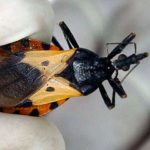October 29, 2024
Researchers at the University of British Columbia (UBC) and Simon Fraser University (SFU), collaborating with The Gambia’s Medical Research Council (MRC) Unit, have developed an innovative diagnostic tool that could help healthcare providers identify neonatal sepsis in infants even before symptoms appear. Published in eBioMedicine, this study provides hope for timely and effective sepsis intervention, particularly in lower- and middle-income countries (LMICs), where the incidence and impact of neonatal sepsis are significantly higher.
Sepsis in newborns—triggered by a severe and irregular immune response to infection within the first 28 days of life—affects around 1.3 million infants annually worldwide, with an estimated 200,000 fatalities each year. First author Andy An, a UBC MD/PhD student, highlighted the importance of early detection in potentially preventing the devastating, long-term health effects often associated with neonatal sepsis, including developmental delays and cognitive deficits.
“By recognizing sepsis as early as possible, we can treat infants promptly and ideally avoid these lifelong consequences,” An stated.
New Approach to Sepsis Diagnosis
Traditionally, diagnosing sepsis in newborns has posed significant challenges. Symptoms often resemble those of other illnesses, and available tests may take days and are generally limited to hospitals, restricting prompt intervention. For newborns, particularly those in LMICs, this can mean life-threatening delays in receiving the correct treatment.
Dr. Bob Hancock, co-senior author and a professor in UBC’s Department of Microbiology and Immunology, emphasized that early sepsis detection would afford healthcare providers critical time to tailor treatments, potentially saving many young lives. “The consequences of neonatal sepsis are severe in these vulnerable individuals. An early diagnostic tool could guide physicians and prevent fatalities,” he added.
A Genetic Signature for Early Detection
The research team analyzed blood samples from 720 newborns in The Gambia, identifying 15 infants who later developed early-onset sepsis. Using machine learning, they mapped gene expression patterns active at birth, searching for markers that could predict sepsis onset.
The breakthrough came with the identification of a four-gene “signature” that, when detected together, predicted sepsis with 90% accuracy. “This study was unique in that samples were available from all babies in this cohort on the day of birth, allowing us to study gene expression before any babies exhibited symptoms of sepsis,” explained Dr. Amy Lee, co-senior author and assistant professor at SFU. “Most studies to date have only identified markers present after babies were already ill, which doesn’t provide the predictive insight needed.”
The team hopes to incorporate this genetic signature into portable, point-of-care diagnostic devices, which could be deployed in hospitals or remote areas. These devices, similar to those currently used to test for COVID-19 and influenza, operate with minimal training, using a single drop of blood to provide results on the spot. “This tool could be retooled for sepsis detection easily and affordably, making it accessible in LMICs, where the need is greatest,” noted Dr. Hancock.
A Vision for the Future
Next steps for the team include a large-scale study across diverse populations to confirm the predictive reliability of the gene signature and, subsequently, the development of point-of-care testing devices. If proven effective, this innovation could revolutionize neonatal care and reduce infant mortality from sepsis worldwide.
In conclusion, the ability to predict neonatal sepsis promises a future where infants at risk can receive timely and potentially life-saving interventions, improving survival rates and health outcomes on a global scale.












